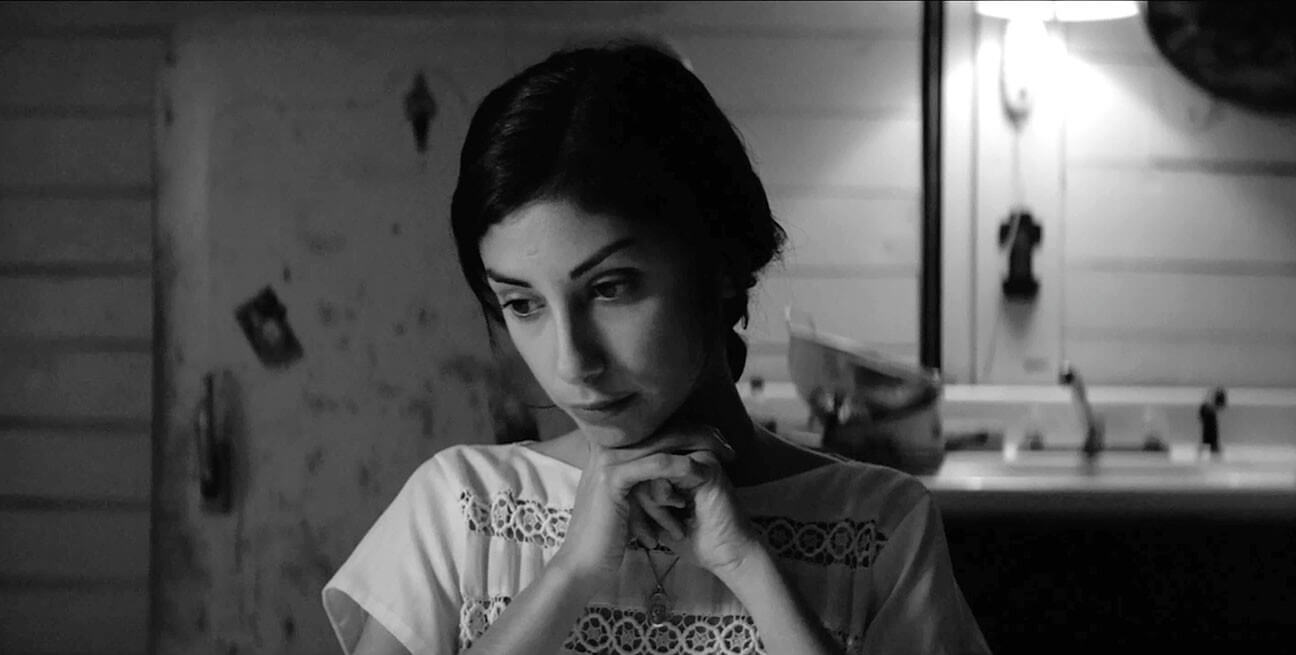The Eyes of My Mother [2016] is a directorial debut as eye-catching (forgive me) as it is stomach-churning. Borrowing from the traditions of arthouse cinema as liberally as from horror, Nicolas Pesce has crafted a magnificent monochrome nightmare that unsettles long after its final frame.
American Gothic: “They say he killed his wife at first, and the little ones did cry.” So goes the murder ballad that welcomes us into the horrific heartland of Pesce’s film. Recounting the killing spree of one Charles Lawson, this grisly folk tune blares from the radio of a semi-truck making its way down a forgotten stretch of highway. The lyrics go on to suggest that the event was not merely heinous, but utterly inexplicable; the singer sorrowfully laments, “We’ll never know what caused him to take his family’s lives.” This sequence and its soundtrack immediately situate us within the film’s disturbing and disorienting milieu. Pesce’s is a story of the untold atrocities committed inside the house next door, the unspeakable terror lying in wait throughout the unexplored portions of rural America. What’s more, the film deals in abstraction and ambiguity. Generally resisting easy answers and pat psychologizing, Pesce leaves the viewer as maddeningly unnerved and uncertain as Lawson’s friends and neighbors must have been.
God Help the Child: With characteristic abruptness, the film jumps to the first of its three increasingly gruesome chapters. ‘Mother’ introduces us to young Francisca (Olivia Bond), awestruck under the tutelage of the family matriarch (Diana Agostini), a Portuguese ophthalmologist. Just how this woman wound up married to a stoic American (Paul Nazak) and raising a child in a farmhouse so far from home is yet another of the film’s myriad mysteries. From these bucolic early moments, Pesce draws a troubling connection between the domestic and the dreadful that lasts throughout. Before we’ve seen a killing framed by flapping laundry or bookended by the necessary clean-up, we’ve watched as Mother and Daughter carefully dissect a cow’s eyeball on their kitchen table. Francisca’s wide-eyed stare and rapt attention betray a more than a casual interest in blood and death. When a startling and seemingly random act of violence upsets the family’s pleasant existence, we begin to get a sense for the peculiar ways Francisca has internalized her mother’s lessons.
“You’re My Only Friend:” As the years pass, Francisca (Kika Magalhaes) grows into living proof of another piece of maternal wisdom: “Loneliness does strange things to the mind.” As her isolation increases so, too, does her capacity for depravity. Magalhaes, with her huge expressive eyes and delicate frame, forbids us to forget the stunted child inside. Her Francisca is a special kind of monster, a character that manages to earn nearly as much pity as revulsion. The film’s stunning black-and-white cinematography is particularly notable for the way it manages to somehow place us within Francisca’s troubled headspace while simultaneously keeping us at a distance. Static, shadowy, and strange this world seems unusual to us, but it gives us some sense of the warped way this woman must see things. In an era of found footage, the film’s aesthetic is a revelation. Even in its most repulsive moments, Pesce’s film is a thing of uncommon beauty. Perhaps the director’s most canny trick is forcing us to marvel at the macabre and reckon with the implications of our disgusted wonder.
Both gorgeous and grotesque, Malickian and malicious, Pesce’s film will undoubtedly alienate most audiences. Those who can tune themselves to its elliptical rhythms and bear its frightful images, however, will agree that The Eyes of My Mother is the work of a promising new talent and further proof of an ongoing renaissance for horror.

